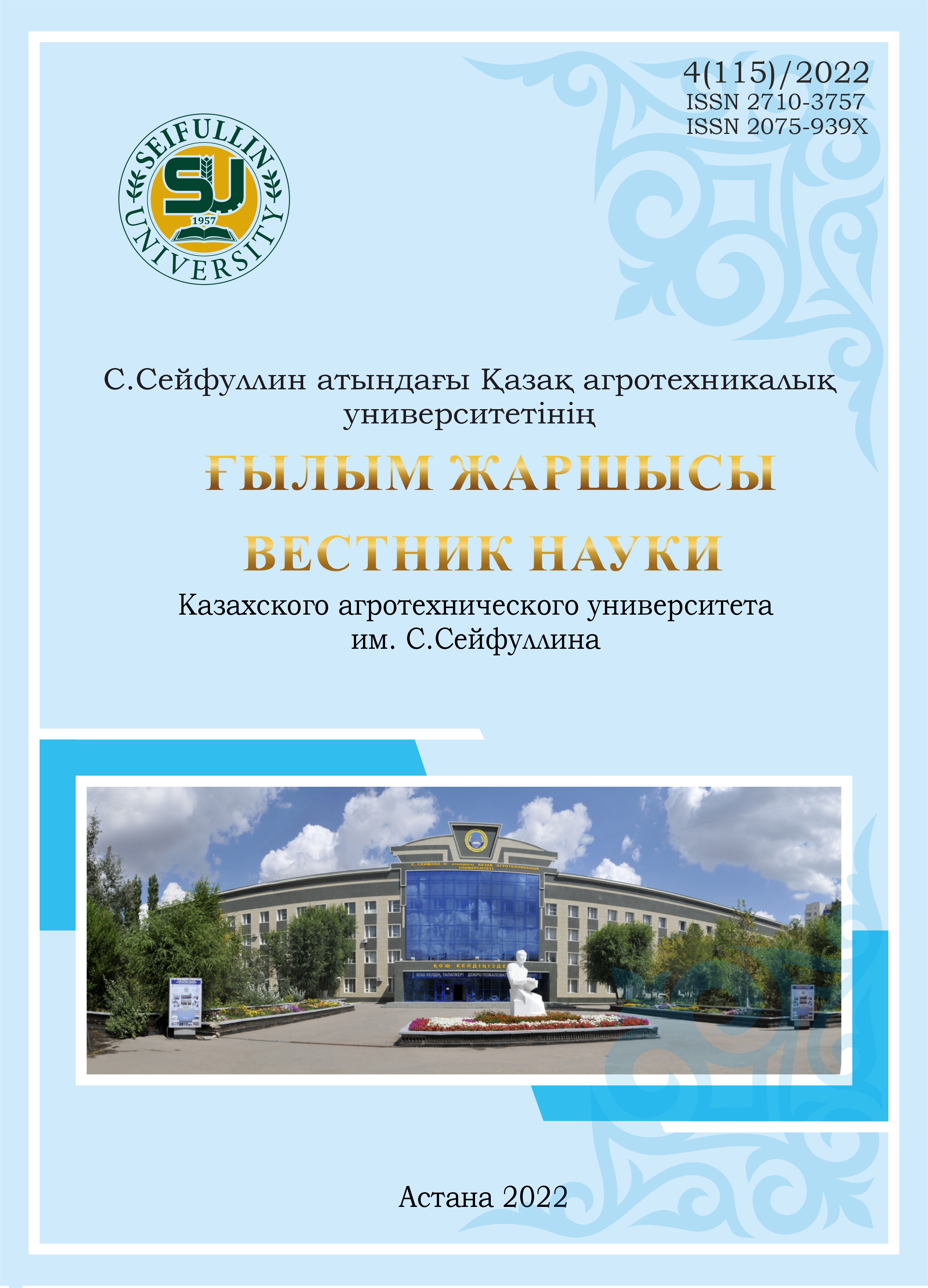EFFICIENCY OF GRAIN FALLOW CROP ROTATIONS AND PERMANENT SOWING OF SPRING WHEAT IN THE CONDITIONS OF THE NORTH KAZAKHSTAN REGION
spring wheat; permanent sowing of wheat; grain-fallow crop rotation; productivity; yield of grain per hectare of arable land; economic efficiency; agricultural technology of cultivation.
DOI:
https://doi.org/10.51452/kazatu.2022.4.1209Keywords:
spring wheat; permanent sowing of wheat; grain-fallow crop rotation; productivity; yield of grain per hectare of arable land; economic efficiency; agricultural technology of cultivation.Abstract
The relevance of the research lies in the fact that with a rather high share of grain crops in the structure of crops in the northern regions of Kazakhstan, the most important means of further increasing the yield and gross yields of all agricultural crops is the development of science-based crop rotations, as well as the possibility of permanent cultivation of spring cereals. Scientific research involved a comparative study of grain-fallow crop rotations with a different number of fields (2, 3, 4 and 5 fields), in comparison with the permanent cultivation of spring wheat, with an assessment of the impact on productivity and economic efficiency under current production conditions. The research methodology involved field laying experiments in a hospital, as well as a laboratory assessment of the productivity of agricultural crops. According to the results of the study, the most optimal for the conditions of Northern Kazakhstan are 4 and 5-field schemes of grain fallow crop rotations with a fallow share of 20 and 25%, with an excess of grain yield per hectare of arable land by 1.1 – 2.9 centners, and efficiency by 12 – 51%. The practical value of the research is to obtain reliable data on the optimal technology of long-term cultivation of spring wheat in grain-fallow crop rotations, or permanent crops, with their potential use by farms to increase production levels.

